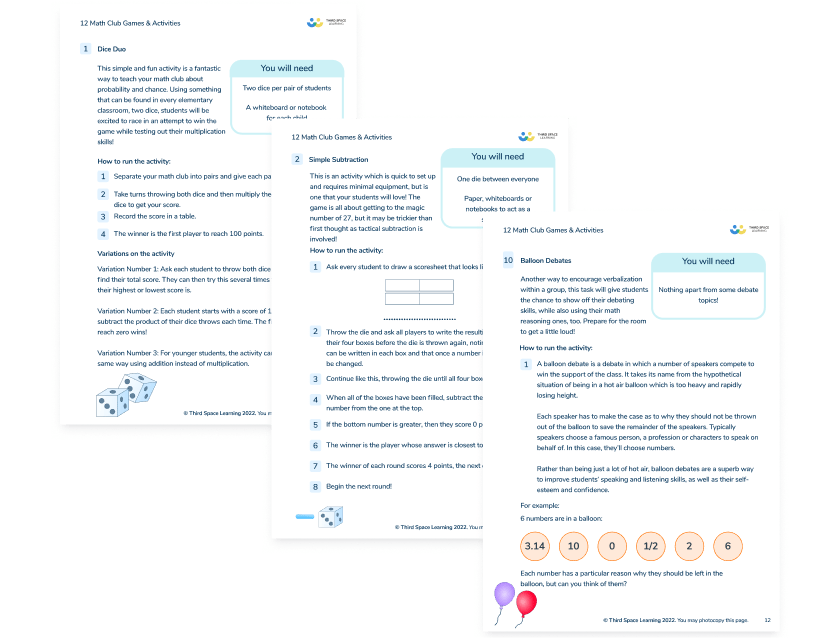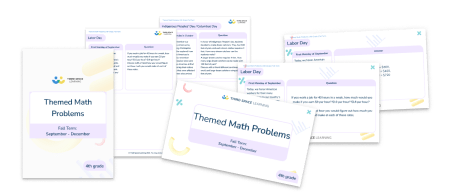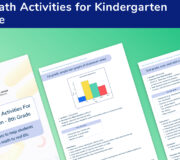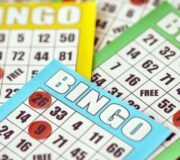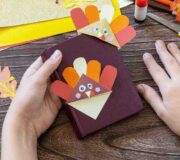12 Awesome Fall Math Activities For Elementary School
We’ve put together 12 fabulously fun fall math activities for you to use in, and out of, the classroom! If you are looking for some lesson inspiration this fall semester, take a look at these super fun math activities which will get your students up and active while learning math. There is something for everyone here, so we hope you enjoy using the activities with your elementary school class!
Themed Math Problems: Set 1 (Sep – Dec), 4th Grade
4th Grade math problems that link to key dates in the Fall Term, including Halloween, Thanksgiving and Christmas.
Download Free Now!- Activities For Outside The Classroom
- Fall Math Activity 1 – Count The Chestnuts!
- Fall Math Activity 2 – Symmetry in nature
- Fall Math Activity 3 – Fall Place Value
- Fall Math Activity 4 – Place Value Soccer
- Fall Math Activity 5 – Stick Numbers
- Fall Math Activity 6 – Shapely Sticks
- Fall Math Activity 7 – Artistic Inspiration
- Fall Math Activity 8 – Measure Me, Treasure Me
- Activities For Inside The Classroom
Activities For Outside The Classroom
These active math activities can be used outside the classroom to bring a little extra excitement to math lessons.
Fall Math Activity 1 – Count The Chestnuts!
This simple and fun activity is a fantastic way to teach your class about place value using some of the items you can find in the school playground and field. It’s also a great way to get your class moving around and being active while learning math, and you should see a huge amount of engagement with this task!
You will need:
• Baskets or buckets (which will act as 100s, 10s, 1s columns and so on…)
• Chestnuts or acorns (to throw into the baskets/buckets)
How to run the activity:
- Send your class out into the playground or field to collect around 20 chestnuts/acorns. They can do this as a group or individually.
- While they are collecting, you can set up your baskets and assign them to the 100s, 10s, and 1s columns needed when teaching place value. Placing a label on each bucket can act as a reminder of which column is which for your students.
- Pick a number and shout it out to your students.
- They will then throw the chestnuts/acorns into the respective baskets (columns) to make up the number.
E.G. If you shout 684 then 6 chestnuts/acorns will go in the 100s column (basket), 8 chestnuts/acorns into the 10s column (basket) and 4 chestnuts/acorns into the 1s column (basket).
You could also add in an element of competition and see who can make up the number first, but make sure everyone who is not playing is a safe distance from the chestnuts/acorns throwing zone!
Take a look at our example video below for inspiration, and take note of how we utilized tennis balls with no chestnuts/acorns available near the office!
Fall Math Activity 2 – Symmetry in nature
This is a great activity to engage your class with symmetry in a clever and fun way. Incorporating nature, which you can find within the school grounds, into your lessons is a fabulous way to generate excitement among your students, and it is always good when concrete resources come free from the hand of mother nature herself!
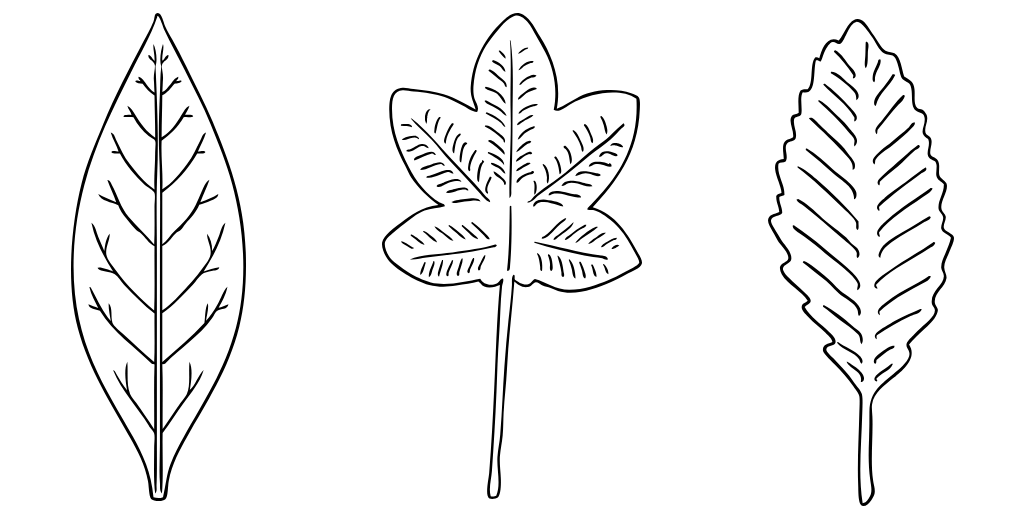
You will need:
• Lots and lots of leaves!
How to run the activity:
- Instruct your class to head outside and collect a number of different types of leaves that can be found in the playground. The more complete the leaf is the better, so instruct your students to hunt down the leaves that the caterpillars haven’t got to yet.
- Ask your students to trace around the leaves they have collected onto a piece of paper and then cut it out.
- The final step is to ask them to work out the lines of symmetry for each of the leaves. They may realize that due to the huge variation provided by nature their leaves may not have a line of symmetry within them, but this is okay as it tests reasoning and encourages verbalization.
If you are looking for a way to help your students settle into class after lunchtime, why not check out our 15 Free Maths Lesson Starters and combine them with one the the activities in this blog?

Meet Skye, the voice-based AI tutor making math success possible for every student.
Built by teachers and math experts, Skye uses the same pedagogy, curriculum and lesson structure as our traditional tutoring.
But, with more flexibility and a low cost, schools can scale online math tutoring to support every student who needs it.
Find out more
Fall Math Activity 3 – Fall Place Value
This fun, place value math activity is a great alternative to teaching in the classroom! Encouraging your students to go outdoors and find natural items will keep them fully engaged when it comes to learning about place value, and help cement the principle through the use of active math.
You will need:
• Various natural items like twigs, leaves, acorns, chestnuts, stones.
How to run the activity:
- Take your class outside and ask them to find as many natural items as they can.
- Decide upon which groups of items will act as the replacements for each of the 1s, 10s, 100s place value counters. For example you may decide that rocks are now 10s, twigs are 100s and leaves are 1000s.
- Shout out a number to your class.
- It is up to your students to establish which is the right amount of each item that is needed to create the number you have called out.
If you need a little extra help, take a look at the how-to video above for a visual explanation.
Fall Math Activity 4 – Place Value Soccer
This interactive math game is a great way to test your classes’ understanding of place value and make the most of the last couple of weeks of sunshine. With the Premier League season now in full gear, this is a great chance for your class to emulate soccer stars, while learning about place value.
You will need:
• PE cones
• A soccer ball
How to run the activity:
- Lay out the cones to make some goals (we recommend starting with 3 goals next to each other). Each goal will represent a place value column e.g. 100s, 10s and 1s.
- Separate your students into teams of 6. This will enable you to have 2 students either side of each goal.
- Pick a number and shout it out to your students (e.g. 385)
- Your class will then pass the ball to their partner through each column to make up the number (e.g. pass through the 100s column 3 times, the 10s column 8 times, and the 1s column 5 times to make up 385).
You could also add an element of competition and see who can make up the number the fastest by having two sets of goals. Make sure they don’t kick the ball too hard though!
Fall Math Activity 5 – Stick Numbers
This is a great activity for fall time as there are always a lot of twigs lying around on the ground. If you teach at a school without a huge amount of outside space, you can always ask the children to bring some in from home. With lots of variations of this task available (numerals, roman numerals and angles) it is sure to keep your class busy!
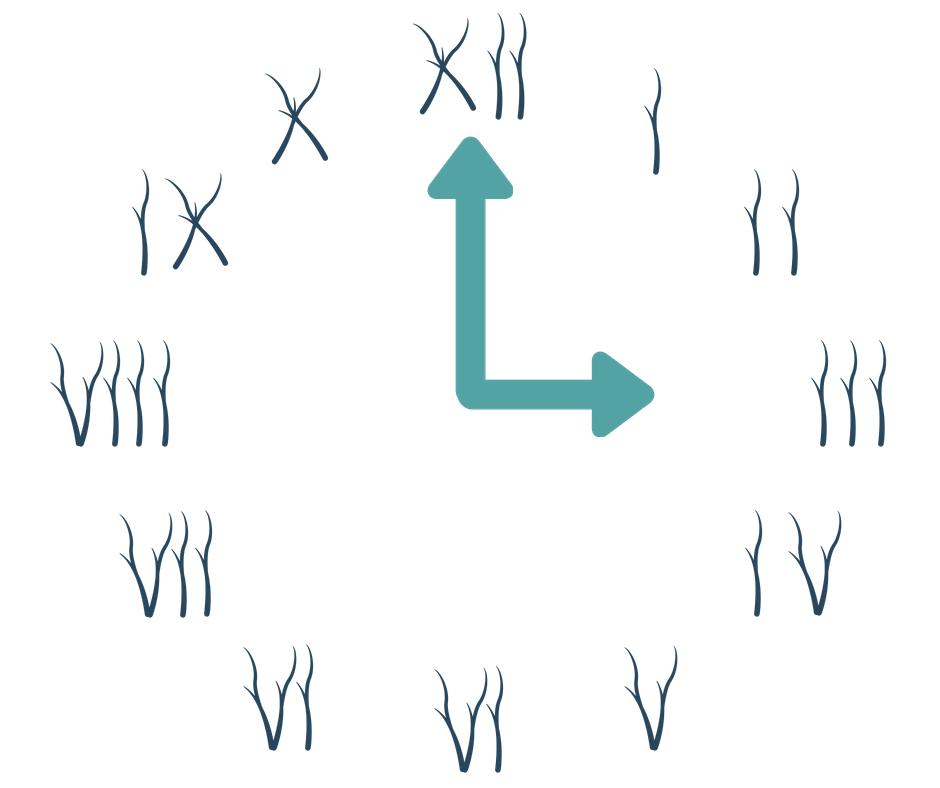
You will need:
• A large collection of twigs
How to run the activity:
- Get your class to collect a large number of twigs.
- Once they have collected enough, their task is to make the numerals 1 to 9.
- The next step is to mix it up and challenge your students. Can make the number 2 with 2 twigs? 3 with 3 twigs, and so on?
- What about angles? See if the children can spot the angles they make! Can they make a 3 with 3 angles? A 4 with 4 angles, and so on?
- Then Roman Numerals! Could the children make a clock face with all the Roman Numerals from I – XII? (The students can make the sticks smaller by snapping them if they need to!)
If you really wanted to stretch and challenge your class you could ask the students if they can make sums using Arabic and Roman Numerals! E.g. 10 x VII = 70
Fall Math Activity 6 – Shapely Sticks
Twigs are a fabulous resource for making shapes and demonstrating various angles. This activity is a great way to get your class up and about while learning math, and it can easily be adapted to help teach different math topics.
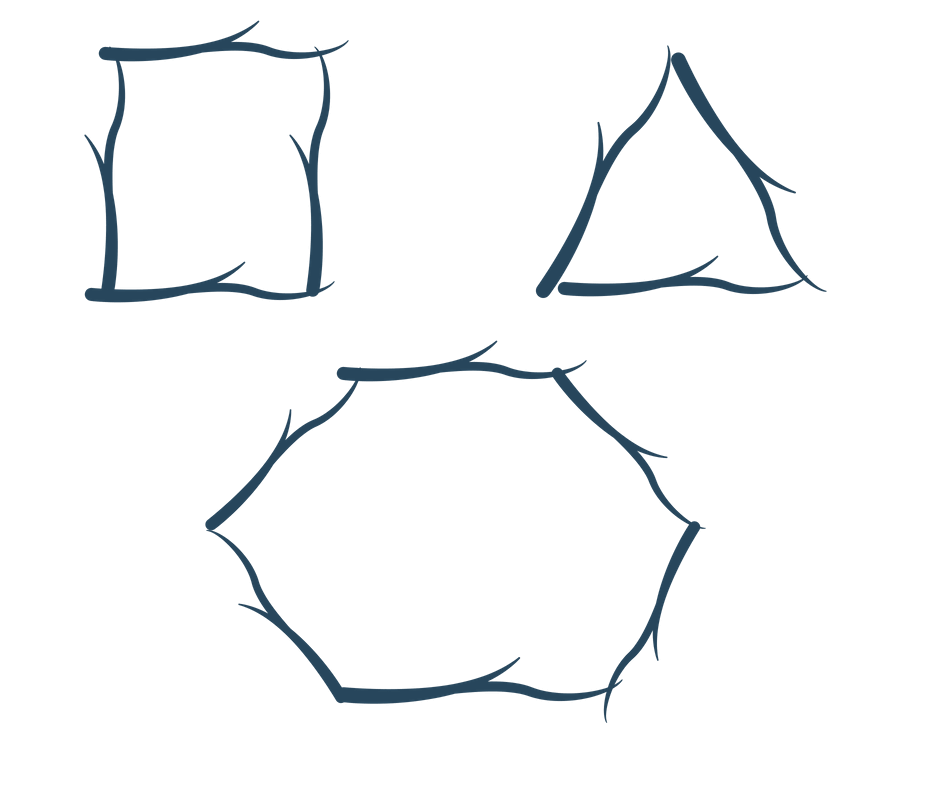
You will need:
• A large collection of twigs
How to run the activity:
- The first thing to do is get your class to collect a big bundle of twigs. It is a case of the more the merrier here, as in an ideal world you will have enough twigs for the whole class to use.
- Get the students to make as many shapes with twigs as they can with right-angles, verbalizing as they go.
Challenge: Can they make a hendecagon? How many interior angles does it have?
Although twigs aren’t always perfectly straight, making right-angles can be great fun especially when children are tasked to build a 2D shape like a house or boat.
You also have the chance to truly give your class a challenge here, so why not see if they can make a 3D shape using twigs and twine?
Fall Math Activity 7 – Artistic Inspiration
This is a great math activity to follow on from the Shapely Sticks Activity. This task will help your students to discover the natural connection between math and art, so this is one to put on the fall art ideas list!
You will need:
• A collection of natural materials including pine cones, twigs, acorns, chestnuts and leaves
How to run the activity:
Link the ‘angles and shapes’ twig math activity to the sculptor Andy Goldsworthy and encourage your students to build and design their own outdoor math pieces of art.
To inspire your class, show examples of the artist’s work to them. Tell them that they could combine different materials to make shapes and collecting things like flowers, leaves, stones and twigs will create a special environmental art sculpture just like Andy Goldsworthy’s.
This is a great activity for the end of term as it gets children excited about math through exploring nature! It will be sure to make them excited about coming back to their math lessons over the holidays!
Classroom Bonus: Take pictures of their sculptures and hang them up around your classroom!
Fun math activities are in demand all year round, so if you are looking for more fun ways to bring math into your classroom, take a look at our 19 fun math activities for the end of the year.
Fall Math Activity 8 – Measure Me, Treasure Me
This super fall math activity is an absolute classic that can be done both inside and outside the classroom. It’s all about finding the approximate age of a tree, using only a tape measure or a piece of string!
You will need:
• A tape measure or piece of string
How to run the activity:
- Get your class to measure the distance around a tree trunk, about one yard from the ground.
- Ask them to work out the age of the tree based on the fact that approximately every inch of girth correlates to approximately 1 year of growth.
- Get your students to compare various trees around the school ground and see which is the oldest.
E.g. a tree with a girth of 40 inches will be around 40 years old (40 ÷ 1 = 40).
Bonus Idea: To recreate this activity in the classroom get the children to stand still and pretend to be trees themselves to measure. They’ll love pretending their arms are branches!
How Third Space Learning uses topical math in our 1-to-1 AI tutoring lessons
Skye, the AI math tutor, will often use topical events and tasks to really help bring math to life for the students in our sessions. By relating topics that are being discussed in the playground to math, we have found that it is a fantastic way to ensure engagement throughout the entirety of our sessions. No matter whether it’s the Super Bowl or Thanksgiving, Skye will encourage verbalization and get your students talking about math!
Book your no commitment 10 minute demo to discover the impact our 1-to-1 interventions can have for your students – it’s never been easier or more affordable. Contact us here to learn more about how we can help turbocharge math in your school!
Activities For Inside The Classroom
When those rainy fall days come, these activities are perfect to use inside the classroom.
Fall Math Activity 9 – Multiplication Table Bingo
This fall math activity is great for a rainy day, as it’s sure to lift your classes’ spirits. Everyone loves a game or two of bingo, so incorporating this fun and easy game with multiplication tables is a fabulous way to get your class thinking on the spot!
You will need:
• A pack of 12 table tennis balls
• A permanent marker
How to run the activity:
- Choose a set of multiplication facts (for example the x5 facts).
- Decide which method you would like to use to play Multiplication Table Bingo.
There are 3 ways to play this Multiplication Table Bingo:
Method Number 1:
Write any multiplication table on the ball up to 12. (e.g. 5 x 1 up to 5 x 12).
Method Number 2:
Write the product of a times table on the table tennis balls (e.g. 5 up to 60)
Method Number 3:
Write the division of the product by one factor on each table tennis ball (e.g. 5÷5 up to 60÷5)
Once you know which version of the game you are going to play:
- Place these balls into a bucket/bag.
- Use miniature whiteboards to create a bingo grid for each student.
- Draw out a ball at a time and shout it out to the class.
- They will then write what is on the ball and the answer on the bingo card.
- The first to answer and fill all of their bingo card shouts “BINGO” (and potentially wins a prize)
You can add an element of competition by seeing who can complete all 3 variations of ‘Multiplication Tables Bingo’ first.
Fall Math Activity 10 – It’s Time To Make A Pie
Fall is a time for comfort food. Pies, cookies, biscuits, pizza,…the list goes on! This fun and easy activity is bound to get your class thinking about all the delicious food that is to come while testing their math ability. This activity can be linked to ratio and proportion, fractions and converting between different units, so there are plenty of things to test your class on!
You will need:
• Nothing apart from math books and some willing students!
How to run the activity:
You can either get your class to research and create recipes for the favorite comfort foods, or you can provide the recipe for them.
As an example, you could give your class this recipe and ask them to rewrite it for 8 people, then for 4 people, then for 2 people….
(serves 16 people)
For the crumble topping:
1/2 cup all-purpose flour
1 cup castor sugar
1 cup unsalted butter (At room temperature and cut into pieces)
For the fruit base:
2.5 lbs Apples
½ cup unsalted butter
½ cup sugar
1 lb blackberries
1 tbsp ground cinnamon
Vanilla ice cream to serve! Yum!
Fall Math Activity 11 – An Autumn Investigation
Get your class to figure out the answers to these seasonal questions. As well as testing their knowledge on time, it is also a fun way to learn about the fall season in a bit more detail.
You will need:
• Nothing apart from math books and some willing students!
How to run the activity:
It is just a case of writing these questions (or others you think of) up on the board for the students to answer. Questions you could use include:
- How many months are in fall?
- How many days are in fall?
- How many hours are in fall?
- How many minutes are in fall?
- If the daylight gets shorter by 3 minutes each day in fall, how many hours of daylight are in October?
Fall Math Activity 12 – Fall Logic Puzzle
This fall logic puzzle is a great resource to use in the classroom as it will really test your students. Once they have cracked the code and worked out how much a leaf, a tree and a pumpkin are worth, you can adapt the puzzle and update the numbers.
You will need:
• The fall logic puzzle
How to run the activity:
Hand out this fall math activities worksheet in class!
Can you work out what the numbers should be in the gaps?
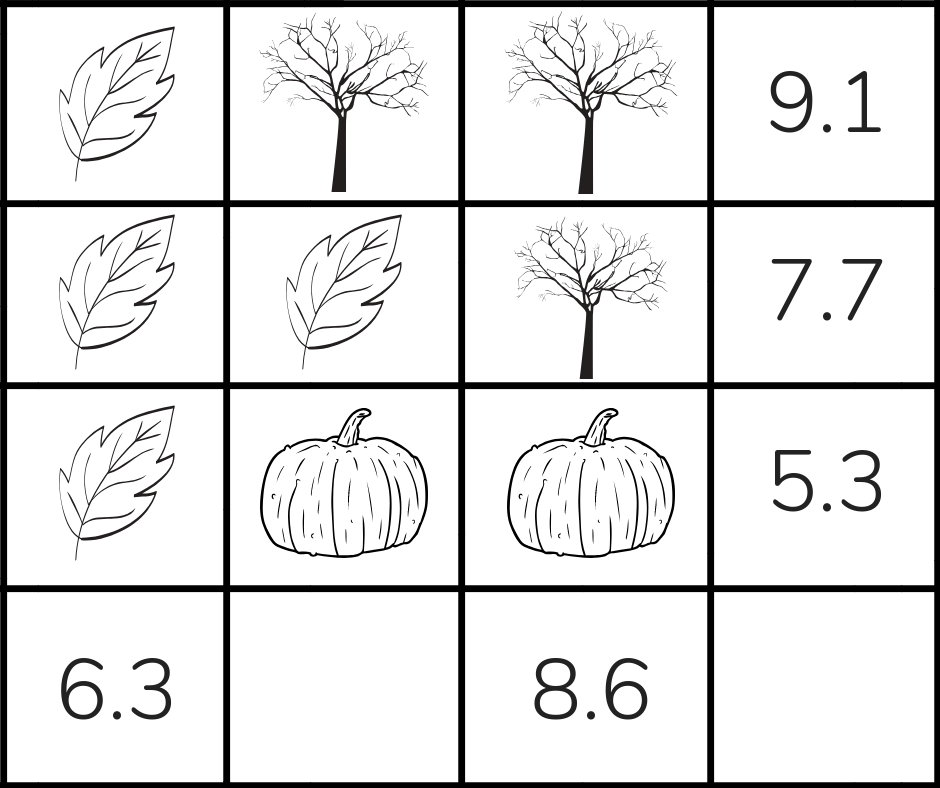
Here at Third Space Learning, we are passionate about encouraging active math as we feel that it is one of the best ways to help students retain knowledge in lessons.
Still looking for more activities for your class? Try these 10 ridiculously fun math lessons and Halloween math activities.
Do you have students who need extra support in math?
Skye—our AI math tutor built by experienced teachers—provides students with personalized one-on-one, spoken instruction that helps them master concepts, close skill gaps, and gain confidence.
Since 2013, we’ve delivered over 2 million hours of math lessons to more than 170,000 students, guiding them toward higher math achievement.
Discover how our AI math tutoring can boost student success, or see how our math programs can support your school’s goals:
– 3rd grade tutoring
– 4th grade tutoring
– 5th grade tutoring
– 6th grade tutoring
– 7th grade tutoring
– 8th grade tutoring
The content in this article was originally written by primary school teacher Sophie Bartlett and has since been revised and adapted for US schools by elementary math teacher Christi Kulesza.
